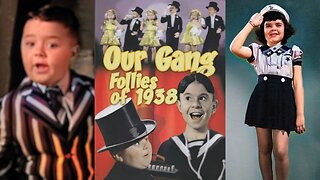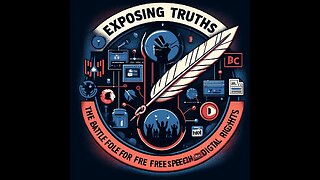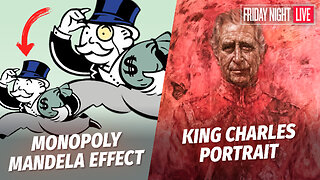PLANE CRAZY (1928) Mickey Mouse, Minnie Mouse & Clarabelle Cow | Animation, Family, Comedy | B&W
Plane Crazy is a 1928 American animated short film directed by Walt Disney and Ub Iwerks. The cartoon, released by the Walt Disney Studios, was the first appearance of Mickey Mouse and his girlfriend Minnie Mouse, and was originally a silent film. It was given a test screening to a theater audience on May 15, 1928, and an executive from Metro-Goldwyn-Mayer saw the film, but failed to pick up a distributor. Later that year, Disney released Mickey's first sound cartoon, Steamboat Willie, which was an enormous success; Plane Crazy was officially released as a sound cartoon on March 17, 1929. It was the fourth Mickey film to be given a wide release after Steamboat Willie, The Gallopin' Gaucho and The Barn Dance (1929).
SYNOPSIS
Inspired by Lindbergh's flight from New York to Paris, Mickey builds a plane to take Minnie for a trip involving some necking, though Minnie objects to the necking.
Mickey is trying to fly an airplane to imitate Charles Lindbergh. After building his own airplane, he does a flight simulation to ensure that the plane is safe for flight, but the flight fails, destroying the plane. Using a roadster, a turkey's tail and the remains of his plane to create a new plane, he asks his girlfriend Minnie to join him for its first flight after she presents him with a horseshoe for good luck. They take an out-of-control flight with exaggerated, impossible situations. Clarabelle Cow briefly "rides" the aircraft.
Once he regains control of the plane, he repeatedly tries to kiss Minnie. When she refuses, he uses force: he breaks her concentration and terrifies her by throwing her out of the airplane, catching her with the airplane, and he uses this to kiss her. Minnie responds by slapping Mickey and parachutes out of the plane using her bloomers. While distracted by her, Mickey loses control of the plane and eventually crashes into a tree. Minnie then lands, and Mickey laughs at her exposed bloomers.
CREW
Directed by Walt Disney, Ub Iwerks
Story by Walt Disney, Ub Iwerks
Produced by Walt Disney
Music by Carl W. Stalling
Animation by Ub Iwerks
Production company Walt Disney Studio
Distributed by Pat Powers (Celebrity Productions)
Release dates May 15, 1928 (test screening), March 17, 1929 (wide release)
Running time 5:56 (one reel)
Country United States
Language English
NOTES
Production
The short was co-directed by Walt Disney and Ub Iwerks. Iwerks was also the sole animator for this short and spent just two weeks working on it in a back room, at a rate of over 700 drawings a day. It is also speculated Hugh Harman and Rudolf Ising might have done work for the short as well. The sound version contained a soundtrack by Carl W. Stalling, who recorded it on October 26, 1928, when he was hired, and a month before Steamboat Willie was released.
The point of view shot from the plane made it appear as if the camera was tracking into the ground. When they shot this scene, they piled books under the spinning background to move the artwork closer to the view.
The Film Daily (March 24, 1929): "Clever. Mickey Mouse does his animal antics in the latest mode via areoplane. [sic] The cartoonist has employed his usual ingenuity to extract a volume of laughs that are by no means confined to the juveniles. The sound effects are particularly appropriate on this type of film, and certainly add greatly to the comedy angle with the absurd squeaks, yawps and goofy noises."
Reception
Variety (April 3, 1929): "Walt Disney sound cartoon, produced by Powers Cinephone, one of the Mickey Mouse series of animated cartoons. It's a snappy six minutes, with plenty of nonsensical action and a fitting musical accompaniment. Constitutes an amusingly silly interlude for any wired house. Disney has derived some breezy situations, one or two of them a bit saucy but, considering the animal characters, permissible."
Copyright and preservation status
The silent version was copyrighted on May 26, 1928, eleven days after it was test screened. The copyright for the silent version was renewed on March 14, 1956. The sound version was copyrighted on August 9, 1930 and was renewed on December 16, 1957, but the copyright on the title card of the film says 1929 (MCMXXIX). It is unknown to what extent changes were made between the original silent version and the sound version.
The silent version of the film entered the public domain in the United States in 2024, but the sound version will remain copyrighted until 2025 according to current U.S. copyright law.
-
 21:23
21:23
Lost n Found Films
5 days agoOUR GANG FOLLIES (1938) George 'Spanky' McFarland, Carl 'Alfalfa' Switzer, Darla Hood | Comedy | B&W
9 -
 LIVE
LIVE
Right Side Broadcasting Network
3 days agoLIVE REPLAY: President Trump Keynotes Minnesota GOP Annual Dinner - 5/17/24
7,052 watching -
 1:03:27
1:03:27
Talk Nerdy 2 Us
9 hours agoExposing Truths: Julian Assange's Battle and the TikTok Conspiracy
46K6 -
 1:58:50
1:58:50
Laura Loomer
11 hours agoEP47: Georgia GOP Rocked With Anti-Trump Scandal Ahead of State RNC Convention
75.7K95 -
 2:20:49
2:20:49
Roseanne Barr
12 hours agoWe finally got Ryan Long!!!! | The Roseanne Barr Podcast #48
77.8K95 -
 1:01:06
1:01:06
The StoneZONE with Roger Stone
14 hours agoWill Terrorists Take Down America's Power Grid? With Glenn Rhoades | The StoneZONE w/ Roger Stone
66.1K30 -
 1:03:58
1:03:58
Edge of Wonder
14 hours agoAce Ventura: Mandela Detective, King Charles Portrait & Weird News
66.7K63 -
 1:40:05
1:40:05
The Quartering
18 hours agoWhy Modern Women Suck w/Hoe_Math
97.8K59 -
 1:43:26
1:43:26
Robert Gouveia
14 hours agoGarland SHAKING over CONTEMPT; Congressional MELTDOWN; Fani RAGES at Senate; Tish INVESTIGATED
90.8K104 -
 1:48:05
1:48:05
2 MIKES LIVE
16 hours ago#67 2ML Open Mike Friday, we have a LOT to talk about!
53.4K7